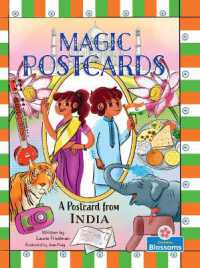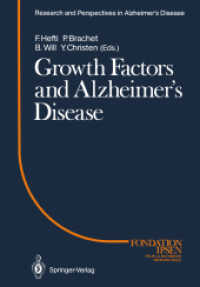Full Description
The Routledge Handbook of Korean as a Second Language aims to define the field and to present the latest research in Korean as a second language (KSL).
It comprises a detailed overview of the field of KSL teaching and learning, discusses its development, and captures critical cutting-edge research within its major subfields. As the first handbook of KSL published in English, this book will be of particular interest to advanced undergraduates, graduate students, language teachers, curriculum developers, and researchers in the fields of KSL and applied linguistics.
While each chapter will be authored by internationally renowned scholars in its major subfields, the handbook aims to maintain accessibility so that it can also be of value to non-specialists.
Contents
1 Korean as a Second/Foreign Language (KSL): An overview; PART I: The acquisition of Korean as a second language; 2 Second Language Learning of Polysemous Korean Words; 3 Phonological Acquisition; 4 Linguistic Politeness; 5 KSL Syntax and Semantics; 6 Relative Clauses in Korean as a Second Language: Old and New Findings; PART II: Teaching and learning Korean as a second language; 7 Pragmatic Teaching and Learning; 8 Task-Based Language Teaching in Korean Classroom Contexts: Promoting Learner Engagement during Task Performance; 9 Instructional Technology in KSL Settings; 10 Culture in Korean Language Teaching: Focusing on a Dynamic View of Culture; 11 Korean for Specific Purposes; 12 Content-Based Instruction in KSL Settings; 13 Community Service-Learning in Korean; PART III: Approaches to Korean as a second language; 14 Corpus-Based Research and KSL; 15 Conversation Analysis for KSL: Teaching and Learning Sequence Organization; 16 The Intersection of Discourse, Grammar, Register, Pragmatics, and Culture; 17 Error Analysis; 18 Social Interactions in KSL settings; 19 National Standards and Korean as a Second Language; 20 Usage-Based Approach to Grammar in Korean Language Teaching and Learning; PART IV: Individual differences and social factors; 21 Individual Learner Differences in Learning Korean as a Second Language; 22 Korean as a Heritage Language; 23 Language Ideologies and Identity Formation among KSL Learners; 24 Instructor Individual Characteristics in a KSL/KFL Setting: A Research Perspective; PART V: Assessment; 25 KSL Assessment: The TOPIK, Achievement Tests, and Research Trends; 26 Integrated Performance Assessment and KSL; 27 Interactional Competence in Korean and its Assessment







